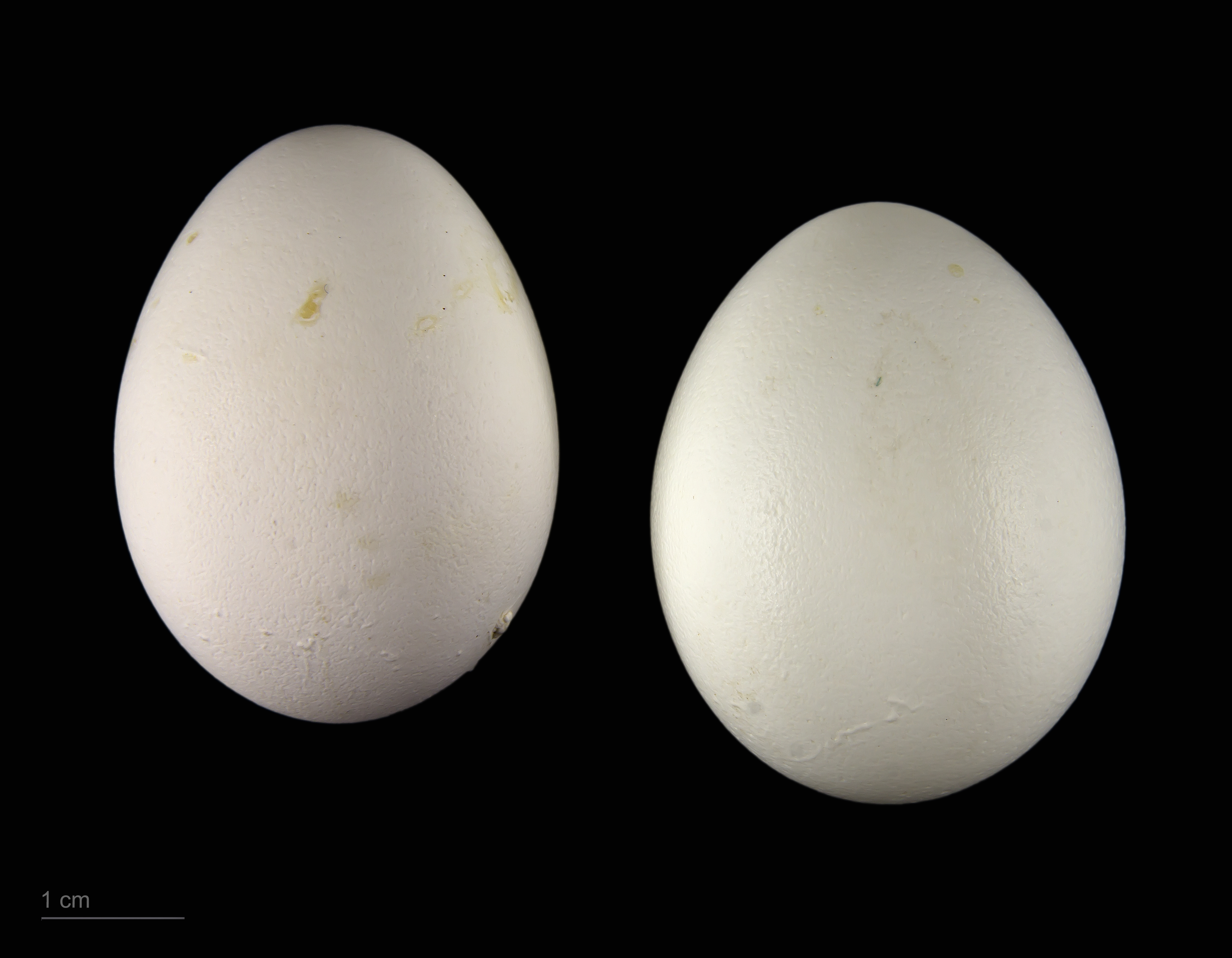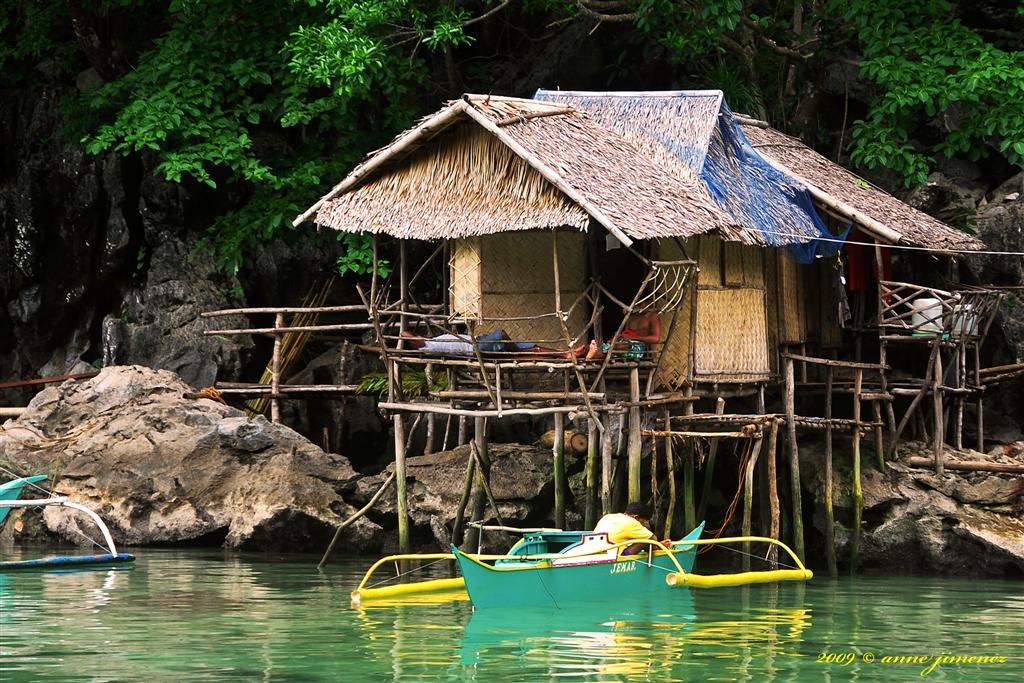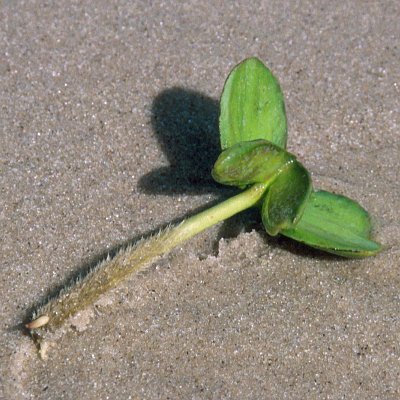|
Sulu Archipelago Rain Forests
The Sulu Archipelago rain forests ecoregion (WWF ID: IM0156) covers the Sulu Archipelago, excepting Basilan Island at the northern end, in the southwest of the Philippines. The islands are separated enough from Borneo to the south and Mindanao to the north that they have developed their own distinctive floral and faunal communities. Most of the original rainforest has been removed or disturbed for agriculture, and political instability in the islands has hampered conservation efforts. Location and description The islands are not the remains of a land bridge between Borneo and Mindanao, but rather are the product of submarine volcanoes. There are deep channels between the Sulus and the larger islands to the south and north, but the distances are not great. The current islands are low-lying and of coral limestone. The islands divide the Sulu Sea to the north from the Celebes Sea to the south. The islands are generally low lying, with the highest elevation being above sea le ... [...More Info...] [...Related Items...] OR: [Wikipedia] [Google] [Baidu] |
Panguan Island
Panguan Island is an island in the Philippine municipality, municipality of Sitangkai, Tawi-Tawi, Sitangkai, Tawi-Tawi. With an area of . It is also known as Malamanok, coming from the Sama–Bajaw languages, Sama-Bajau dialect which means ''eat chicken'' as locals who travel to Sabah usually use this island as a stop-over to eat roasted chicken prior continuing their journey to Malaysia. It is the last island of the Sulu Archipelago nearest to the Malaysia–Philippines border, Philippine-Malaysian border. This island is 50 km or 31 miles away from Sabah state. Just like other Philippine border communities, the area lacks access to food, potable water and healthcare. The island has a newly constructed military barrack, a flagpole, and a small community of Sama-Bajaw, Badjao. History Panguan Island was used as a hideout by the Abu Sayyaf terror group until it was liberated by the 10th Marines Battalion Landing Team (MBLT-10) of the Philippine Marine Corps after the surrender of ... [...More Info...] [...Related Items...] OR: [Wikipedia] [Google] [Baidu] |
Barringtonia
''Barringtonia'' is a genus of flowering plants in the family Lecythidaceae first described as a genus with this name in 1775. It is native to Africa, southern Asia, Australia, and various islands of the Pacific and Indian Oceans. The genus name commemorates Daines Barrington. Species list The following is a list of species of ''Barringtonia'' accepted by the World Checklist of Selected Plant Families as at April 2022: Gallery File:Barringtonia acutangula (Freshwater Mangrove) flower buds in Kolkata W IMG_8546.jpg, flower buds in Kolkata, West Bengal, India. File:Barringtonia acutangula (Freshwater Mangrove) fruits in Kolkata W IMG 8547.jpg, fruits and arrangement of leaves in Kolkata, West Bengal, India. File:Barringtonia acutangula (Freshwater Mangrove) fruits in Kolkata W IMG 8545.jpg, fruits in Kolkata, West Bengal, India. File:Barringtonia acutangula (Freshwater Mangrove) in Hyderabad W IMG 8323.jpg, Tree in Hyderabad, India. File:Barringtonia acutangula (Freshwater ... [...More Info...] [...Related Items...] OR: [Wikipedia] [Google] [Baidu] |
Todirhamphus Winchelli
Winchell's kingfisher (''Todiramphus winchelli'') or the rufous-lored kingfisher, is a species of bird in the family Alcedinidae, the kingfishers. It is endemic to the Philippines, its natural habitat being lowland forests. It is threatened by deforestation, and the International Union for Conservation of Nature (IUCN) has assessed it as a vulnerable species. Taxonomy This species was described as ''Halcyon Winchelli'' by British ornithologist Richard Bowdler Sharpe in 1877, using a specimen collected by American ornithologist Joseph Beal Steere. It was named after American geologist Newton Horace Winchell, as requested by Steere. Although two subspecies were later described, they were usually considered synonymous with the nominate before 1966. That year Kenneth C. Parkes studied a series of 45 specimens and recognised five subspecies, two of which were new. All five are still recognised: ''Todiramphus winchelli nigrorum'' found in the central and east-central Philippines, ''T ... [...More Info...] [...Related Items...] OR: [Wikipedia] [Google] [Baidu] |
Cacatua Haematuropygia
The red-vented cockatoo (''Cacatua haematuropygia''), also known as the Philippine cockatoo and locally katala, abukay, agay or kalangay, is a species of cockatoo A cockatoo is any of the 21 parrot species belonging to the family Cacatuidae, the only family in the superfamily Cacatuoidea. Along with the Psittacoidea (true parrots) and the Strigopoidea (large New Zealand parrots), they make up the ord .... It is Endemism, endemic to the Philippines though pressured by various environmental degradation and illegal pet trades, the population of the Philippine cockatoo is somehow growing owing to Katala Organization.It is roughly the size and shape of the Tanimbar corella, but is easily distinguished by the red feathers around the vent. It is threatened by habitat loss and the cage-bird trade. Description The plumage is all white with red undertail coverts tipped white, yellowish undertail and pale yellow underwings. It is long and has an wingspan. Ebird describes it is ... [...More Info...] [...Related Items...] OR: [Wikipedia] [Google] [Baidu] |
Nypa Fruticans
''Nypa fruticans'', commonly known as the nipa palm (or simply nipa, from ms, nipah) or mangrove palm, is a species of palm native to the coastlines and estuarine habitats of the Indian and Pacific Oceans. It is the only palm considered adapted to the mangrove biome. The genus ''Nypa'' and the subfamily Nypoideae are monotypic taxa because this species is their only member. Description Unlike most palms, the nipa palm's trunk grows beneath the ground; only the leaves and flower stalk grow upwards above the surface. The leaves extend up to in height. The flowers are a globular inflorescence of female flowers at the tip with catkin-like red or yellow male flowers on the lower branches. The flower produces woody nuts arranged in a globular cluster up to across on a single stalk. The ripe nuts separate from the ball and float away on the tide, occasionally germinating while still water-borne. Fossil record While only one species of ''Nypa'' now exists, ''N. fruticans'', w ... [...More Info...] [...Related Items...] OR: [Wikipedia] [Google] [Baidu] |
Avicennia
''Avicennia'' is a genus of flowering plants currently placed in the bear's breeches family, Acanthaceae. It contains mangrove trees, which occur in the intertidal zones of estuarine areas and are characterized by its "pencil roots", which are aerial roots. They are also commonly known as ''api api'', which in the Malay language means "fires", a reference to the fact that fireflies often congregate on these trees. Species of ''Avicennia'' occur worldwide south of the Tropic of Cancer. The taxonomic placement of ''Avicennia'' is contentious. In some classifications, it has been placed in the family Verbenaceae, but more recently has been placed by some botanists in the monogeneric family Avicenniaceae. Recent phylogenetic studies have suggested that ''Avicennia'' is derived from within Acanthaceae, and the genus is included in that family in the Angiosperm Phylogeny Group system. Designation of species is made difficult by the great variations in form of ''Avicennia marina''. B ... [...More Info...] [...Related Items...] OR: [Wikipedia] [Google] [Baidu] |
Sonneratia
''Sonneratia'' is a genus of plants in the family Lythraceae. Formerly the Sonneratia were placed in a family called Sonneratiaceae which included both the ''Sonneratia'' and the ''Duabanga'', but these two are now placed in their own monotypic subfamilies of the family ''Lythraceae''. The genus was also named ''Blatti'' by James Edward Smith, but ''Sonneratia'' had botanical nomenclature priority. ''Sonneratia'' species are mangrove trees. The germination is viviparous. Species The genus ''Sonneratia'' has the following species: *'' Sonneratia alba'' Sm. *'' Sonneratia apetala'' Banks *''Sonneratia caseolaris'' (L.) Engl. *'' Sonneratia griffithii'' Kurz *'' Sonneratia × gulngai'' N.C.Duke *'' Sonneratia × hainanensis'' W.C.Ko, E.Y.Chen & W.Y.Chen *'' Sonneratia lanceolata'' Blume *'' Sonneratia ovata'' Backer *'' Sonneratia × urama'' N.C.Duke See also *Mangroves References *Graham, S. A., Thorne & Reveal (May 1998) "Validation of subfamily names in Lythraceae" ''Ta ... [...More Info...] [...Related Items...] OR: [Wikipedia] [Google] [Baidu] |
Ceriops
''Ceriops'' is a genus of mangroves in family Rhizophoraceae. There are 5 accepted species and 17 known synonyms. List of species * ''Ceriops australis'' (C.T.White) Ballment, T.J.Sm. & J.A.Stoddart ** ''Ceriops tagal'' var. ''australis'' C.T.White synonym of ''Ceriops australis'' (C.T.White) Ballment, T.J.Sm. & J.A.Stoddart * ''Ceriops decandra'' (Griff.) W.Theob. ** ''Ceriops candolleana'' Náves synonym of ''Ceriops decandra'' (Griff.) W.Theob. ** ''Ceriops roxburghiana'' Arn. synonym of ''Ceriops decandra'' (Griff.) W.Theob. * ''Ceriops pseudodecandra'' Sheue, H.G.Liu, C.C.Tsai & Yuen P.Yang * ''Ceriops tagal'' (Perr.) C.B.Rob. ** ''Ceriops boviniana'' Tul. synonym of ''Ceriops tagal'' (Perr.) C.B.Rob. ** ''Ceriops candolleana'' Arn. synonym of ''Ceriops tagal'' (Perr.) C.B.Rob. ** ''Ceriops candolleana'' var. ''sasakii'' Hayata synonym of ''Ceriops tagal'' (Perr.) C.B.Rob. ** ''Ceriops candolleana'' var. ''spathulata'' Blume synonym of ''Ceriops tagal'' (Perr.) ... [...More Info...] [...Related Items...] OR: [Wikipedia] [Google] [Baidu] |
Rhizophora
''Rhizophora'' is a genus of tropical mangrove trees, sometimes collectively called true mangroves. The most notable species is the red mangrove (''Rhizophora mangle'') but some other species and a few natural hybrids are known. ''Rhizophora'' species generally live in intertidal zones which are inundated daily by the ocean. They exhibit a number of adaptations to this environment, including pneutomatophores that elevate the plants above the water and allow them to respire oxygen even while their lower roots are submerged and a cytological molecular "pump" mechanism that allows them to remove excess salts from their cells. The generic name is derived from the Greek words ριζα (''rhiza''), meaning "root," and φορος (''phoros''), meaning "bearing," referring to the stilt-roots. The beetle '' Poecilips fallax'' is a common pest of these trees, especially '' Rhizophora mucronata'' and ''Rhizophora apiculata''. This beetle (related to carver beetles) lays its eggs in the ... [...More Info...] [...Related Items...] OR: [Wikipedia] [Google] [Baidu] |
Shorea
Fruit of a ''Shorea'' species ''Shorea'' is a genus of about 196 species of mainly rainforest trees in the family Dipterocarpaceae. The genus is named after Sir John Shore, the governor-general of the British East India Company, 1793–1798. The timber of trees of the genus is sold under the common names lauan, luan, lawaan, meranti, seraya, balau, bangkirai, and Philippine mahogany. Taxonomy ''Shorea'' fossils (linked with the modern sal, ''S. robusta'', which is still a dominant tree species in Indian forests) are known from as early as the Eocene of Gujarat, India. They are identifiable by the amber fossils formed by their Dammar gum, dammar resin. Other fossils include a Miocene-aged fossilized fruit from the same region; this fruit most closely resembles the extant ''Shorea macroptera, S. macroptera'' of the Malay Peninsula. Description ''Shorea'' spp. are native to Southeast Asia, from northern India to Malaysia, Indonesia, and the Philippines. In west Malesia and th ... [...More Info...] [...Related Items...] OR: [Wikipedia] [Google] [Baidu] |
Hopea
''Hopea'' is a genus of plants in the family Dipterocarpaceae. The genus was named after John Hope, 1725–1786, the first Regius Keeper of the Royal Botanic Garden, Edinburgh. It contains some 113 species, distributed from Sri Lanka and southern India to southern China, and southward throughout Malesia to New Guinea. They are mainly main and subcanopy trees of lowland rainforest, but some species can become also emergent trees, such as ''Hopea nutans''. Species accepted: Other species recently used, but now not accepted include: *'' Hopea exalata'', now a synonym of '' Hopea reticulata'' *''Hopea kitulgallensis'', not now accepted *''Hopea malabarica'', now a synonym of '' Hopea racophloea'' *'' Hopea quisumbingiana'', not now accepted *'' Hopea siamensis'', now a synonym of '' Hopea pierrei'' *'' Hopea wightiana'' Wall., now a synonym of '' Hopea ponga'' Gallery File:Hopea beccariana Base du tronc.JPG, ''Hopea beccariana'' File:A leaf of Hopea odorata.jpg, ''Hopea odora ... [...More Info...] [...Related Items...] OR: [Wikipedia] [Google] [Baidu] |
Dipterocarpus
'' D. retusus'' in Köhler ''Dipterocarpus'' is a genus of flowering plants and the type genus of family Dipterocarpaceae. ''Dipterocarpus'' is the third-largest and most diverse genus among the Dipterocarpaceae. The species are well known for timber, but less acknowledged for use in traditional herbal medicine. The genus has about 70 species, occurring in South Asia and Southeast Asia, from Sri Lanka and India to the Philippines. It is an important component of dipterocarp forests. Its generic name comes from Greek and means "two-winged fruits". The greatest diversity of ''Dipterocarpus'' species occurs on Borneo, with many endemic to the island. The oldest fossil of the genus, and Dipterocarpaceae, is from the latest Cretaceous (Maastrichtian) Intertrappean Beds of India. Uses The genus is of considerable importance as timber trees, sold under the trade name Keruing, although not as important as ''Shorea'' species. ''D. turbinatus'', gurjan, is a major commercial timber sp ... [...More Info...] [...Related Items...] OR: [Wikipedia] [Google] [Baidu] |






